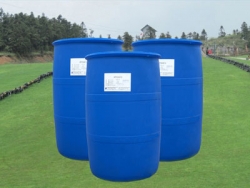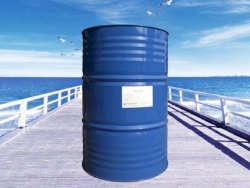The polysaccharide is synthesized by a transglycosylation method to synthesize an alkyl glycoside. Alkyd polyglycoside (APG) has the characteristics of anionic and nonionic surfactants, low surface tension, high activity, strong decontamination ability, rich and delicate foam, stable, non-toxic, non-irritating, It has good compatibility and easy degradation, and can be widely used in various fields of chemical production. It is called “green” surfactant.
The synthetic routes of alkyl glycosides are mainly: 1) Koenigs-Kno rr reaction; 2) direct glycosidation; 3) transglycosylation; 4) enzymatic catalysis; 5) orthoester method; 6) ketal of sugar break down. Among them, the direct glycosidation method and the transglycosylation method are two kinds of studies which are mainly studied in the synthesis method of alkyl glycoside.

Alkyl glycosides (APG) synthesized by transglycosylation are widely used in textiles, cosmetics, pesticides, printing and dyeing, as safe, non-toxic, non-irritating to skin, biodegradable, compatible and environmentally friendly surfactants. Oil cleaning agent and biochemistry.
At the same time, the antitumor activity of polysaccharide derivatives has been fully proved in clinical applications, and there are many other applications of polysaccharide derivatives, such as chemically modified cellulose to obtain ion exchange cellulose, anticoagulant fiber. There are many research reports on the anti-coagulation, anti-oxidation and anti-tumor activities of many cellulose derivatives with special functions and polysaccharide derivatives. It can be said that the molecular modification method of the polysaccharide and the biological activity of the polysaccharide derivative obtained by the molecular modification are significant.

Polysaccharides are obtained by molecular modification to obtain various structural types and various biologically active polysaccharide derivatives, which lays a foundation for the analysis of the relationship between structure and function of polysaccharides. The relationship between structure and function also guides the direction of polysaccharide molecular modification. The design, research and development of drug-like drugs provide theoretical support. Natural polysaccharide derivatives are generally not cytotoxic and the quality of drugs is easily controlled by chemical means. It has become one of the development directions of new drugs today, and they have shown broad prospects in clinical applications. It will increasingly be used as an antiviral, anti-aging, and hypoglycemic agent for anti-tumor, anti-AIDS, and the like. It is foreseeable that with the improvement of the molecular modification method of polysaccharides and the improvement of the technical level, as well as the basic medicine and clinical medicine, the use of molecular modification methods will develop more anti-tumor, anti-clotting, immunity, anti-HIV, etc. New drugs and health products.
